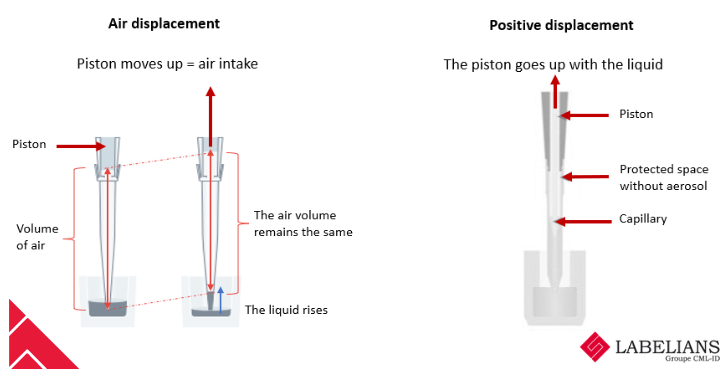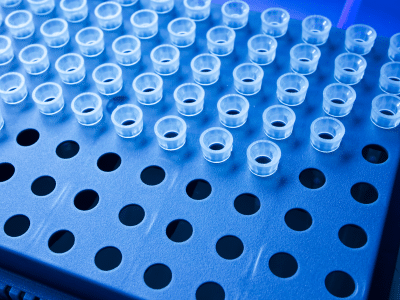Choosing a micropipette requires evaluating normative and technical characteristics but also criteria that are much more subjective.
Normative requirements for micropipettes?
The micropipettes shall meet the requirements of ISO 8655-2: 2022 for volumetric piston devices – Part 2: Pipettes.
This standard describes the requirements from a metrological point of view, the maximum permissible errors (MPE), the requirements for marking and the information to be provided to users.
It applies to all air displacement pipettes (called type A) as well as to positive displacement micropipettes (type D).
How to choose between air displacement or positive displacement micropipette?
Air displacement micropipettes work with cones.
The liquid is sucked in by an air displacement of the piston integrated in the lower part of the micropipette, which creates a draught making the liquid rise according to the movement of the piston.
Positive displacement micropipettes require piston capillaries (syringes) for proper operation.
The piston directly integrated in the capillary is fixed in the pipette and will allow the movement of the piston which is in direct contact with the sampled liquid.

For handling simple, aqueous type liquids, air displacement micropipettes are perfectly suited.
For viscous, volatile or foaming liquids, positive displacement micropipettes should be used because the absence of air prevents foaming. The volume gain is thus better controlled.
Choosing a micropipette: technical but also subjective criteria
There are many models of micropipettes made from very different materials but also with distinct designs.
The material has a real impact on the choice of the pipette model:
- There are materials that are adapted for sterilization by autoclave: this is perfectly indicated in universes requiring a perfect control of the risk of biological contamination
- The contact of the hand with certain materials can have an impact on the choice of the micropipette: some materials have a granular aspect, others smooth …. This has no impact on the quality of pipetting, but it can affect the comfort of use.
This point is totally subjective and depends on the manipulator.
The display window is also a criterion of choice: it can be central or on the side.
This is important to consider because a left-handed technician will be unable to control his volume during manipulation if the window is on the side of the pipette.
Note, however, that there are models whose index grip (index support) is movable, allowing it to adapt to the user.

Among the elements to consider, there is also the weight and especially the balance of the pipette on the hand.
This is even more important in the case of electronic pipettes whose weight is strongly impacted by the position and type of battery.
The variety of micropipettes on offer makes it necessary to evaluate each of these criteria in order to make the right choice that will technically meet analytical needs but also in terms of ergonomics to reduce the risk of musculoskeletal disorders – MSD.
For this, do not hesitate to contact LABELIANS to accompany you in your choice by allowing you to test our micropipettes.




